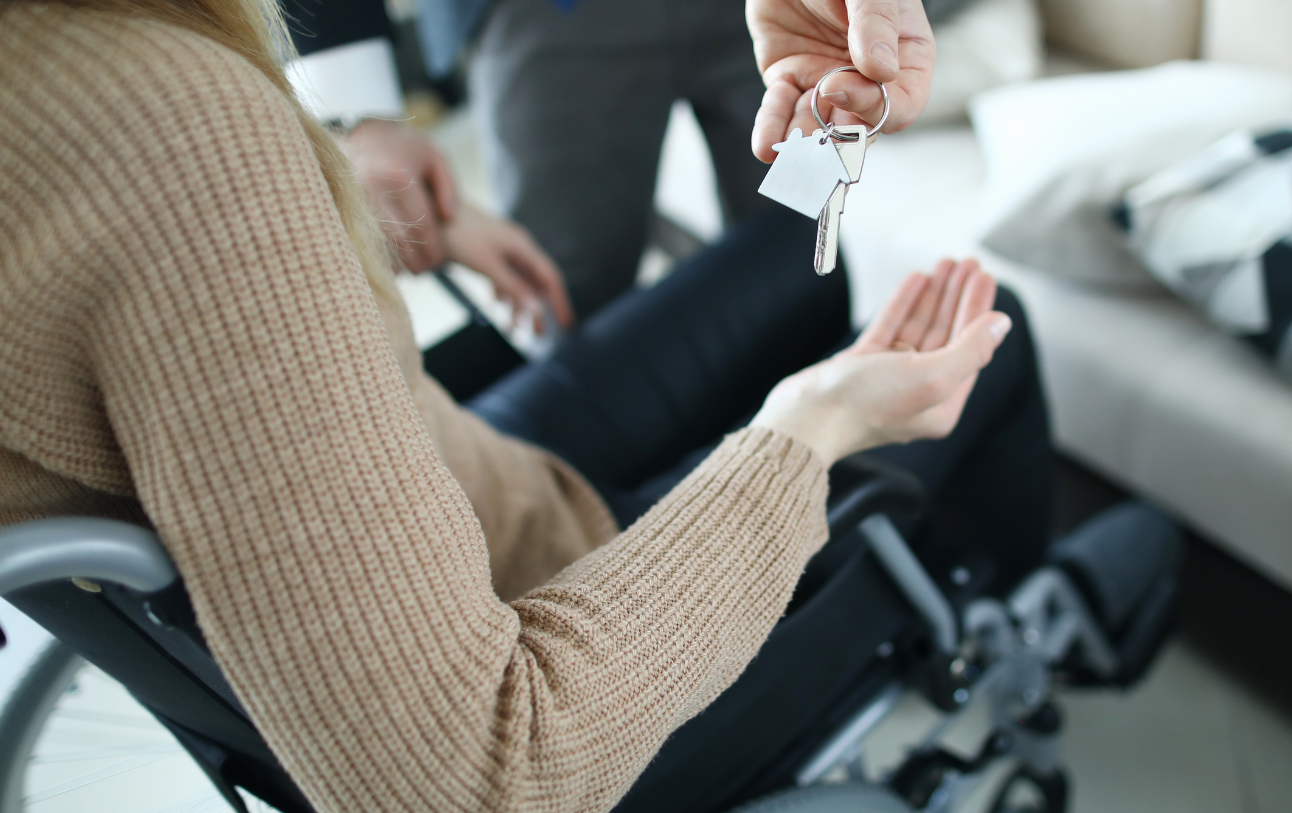
Recognising and supporting disabled victims of domestic abuse
Ruth Bashall is the Director of Stay Safe East, an organization run by disabled people which supports disabled survivors of domestic and sexual violence, hate crime and other abuse, and works for change in policy and strategies at London and national level. Ruth explores the discrepancy between the high levels of violence disclosed by disabled women, and the low percentage of disabled women referred to Maracs.
The key to increasing Marac referrals
Stay Safe East’s experience shows that change can happen, if agencies recognise the particular forms that violence against disabled women may take, and if agencies focus not on vulnerability but on disabled women as victims of gender and disability based abuse. In Waltham Forest, one of the London boroughs where we work, 24% of referrals to Marac are for disabled people, of which around 90% are women.
By disabled women, I mean women who face barriers and exclusion because of society’s response to our having an impairment – be it physical, sensory, a learning disability, a mental health condition, neuro-diversity or a long-term health condition.
Yet how often is the fact that a woman is disabled identified before a Marac meeting? If we do not know that survivors are disabled, we will not be able to meet their needs. We may even not be able to communicate with them. Agencies making Marac referrals must identify the individual communication, access or support needs and share this information on the Marac referral form. If this doesn’t happen, the best opportunity to engage with the survivor may be lost.
Secondly, we need to understand what is different about domestic abuse against disabled women. Of course we experience much of the same range of physical, psychological and financial abuse as other women, but the specific circumstances of our lives mean we also face specific disability related abuse (some of which I would also call hate crime) or abuse where the perpetrator(s) uses our impairment to their advantage.
To give an example (case studies are based on our clients’ experience but some details have been changed):
Asha is a 57 year old woman with long-term mental health issues who lives with her adult son and daughter-in-law. Her son manages her medication. At times she is overmedicated and virtually sedated, at other times he refuses to let Asha have her meds, so they are no longer effective in dealing with her symptoms. He confuses Asha by moving things around, she thinks she is losing her mind. He insults her, calling her ‘schizo’, threatening to tell the neighbours she is mad. She is now struggling to make decisions and is becoming more and more afraid and depressed.
Changes to domestic violence legislation to include coercive control can potentially help professionals to identify more easily how specific abuse against disabled women may manifest itself in a variety of ways. For example:
The abuser controls the victim through their impairment or support needs for example by:
- Denying access to mobility or communication aids, food or medication
- Controlling communication for example by acting as a Deaf woman’s communicator
- Refusing external assistance or a support package
- Forced feeding or other forms of rough ‘assistance’
The abuser uses the life experiences of the disabled woman to control her, for example:
- Persuading her she should accept a marriage because ‘no one else will want a disabled woman’ . ‘If you leave, they will put in you in a home’- the threat of institutionalization is the most powerful threat to any disabled women. Threats to ‘out’ someone as disabled e.g. mental health, HIV, epilepsy, learning disability are also frequently used, and given the stigma attached to some impairments, are also powerful.
The abuser uses the discrimination faced by disabled women to control the victim:
- Inaccessible environments make escape impossible from her own home and there are few accessible refuges
- Inaccessible reporting processes (Our Deaf clients rarely know about the 999 SMS service until we tell them about it)
- Her lack of knowledge of support services because information is not accessible to her, or she cannot identify with those services (‘it’s not for me, it’s for women who are not disabled)
- Less support for disabled people to live independently
- Fear that her children will be removed
A disabled abuser will also manipulate assumptions about disabled people not being perpetrators themselves.
If we do not understand the many forms which disability related domestic violence takes, we do not understand the risk. Disabled women may score low on the risk assessment so do not meet the threshold for automatic Marac referral. Professional judgements may be skewed by assumptions about the perpetrator ‘caring’ for the victim. Stay Safe East has developed a simple risk assessment which covers all the issues above. If you would like to know more, and would like some training around how to use it, please contact us.
We must see disabled victims of abuse as just that: victims/survivors, rather than defining them by their disability. The reason we are more at risk is that we have less power and fewer choices in our lives, and face many more barriers to accessing support.
Case study
Maria, a disabled woman, is denied access by her partner to the specialist nurse for her condition; the partner refuses to have handrails installed in their home. She stops Maria from using a walking stick, and Maria tries to walk without it, mocks her walking and tells her to stand up straight, knowing she will fall and hurt herself. Her partner has pushed and shoved Maria but never hit her- she doesn’t need to, the falls Maria has had over many years were put down to ‘accidents’ due to her impairment. Maria’s partner controls her money, and Maria cannot leave the house without her partner’s help as the access is poor. Her partner has threatened to disclose their relationship to Maria’s family. A safeguarding alert was raised by the specialist nurse but the investigation found that there were no concerns, except that Maria needed access to Dial-a-Ride to get to appointments.
Across the UK, since the implementation of the Care Act, adult safeguarding now has a duty to consider domestic violence; even where a disabled woman is subject to adult safeguarding, domestic violence protocols must be followed . It can work – Stay Safe East has now developed a positive partnership with our local adult safeguarding practitioners, working together to keep victims safe.
Disabled people come into frequent contact with statutory services – adult social care, health, housing, mental health – but if those services are not trained to recognise or ask about abuse, why would a disabled victim speak out? We recommend that social workers, health professionals and housing officers see disabled clients alone, not with a family member present.
Additionally, we need to ensure that when a disabled person comes into contact with us as professionals, whether Idvas or other domestic violence practitioners, police, adult social care, children’s services, health or housing, they get a response which will help them to make decisions about keeping safe. Appropriate referral to Marac is only one part of that process, but it is an essential one. Get this right and we start to break the barriers to effective safeguarding of disabled victims and survivors.
You may also be interested in

Making the Marac process work for disabled people

